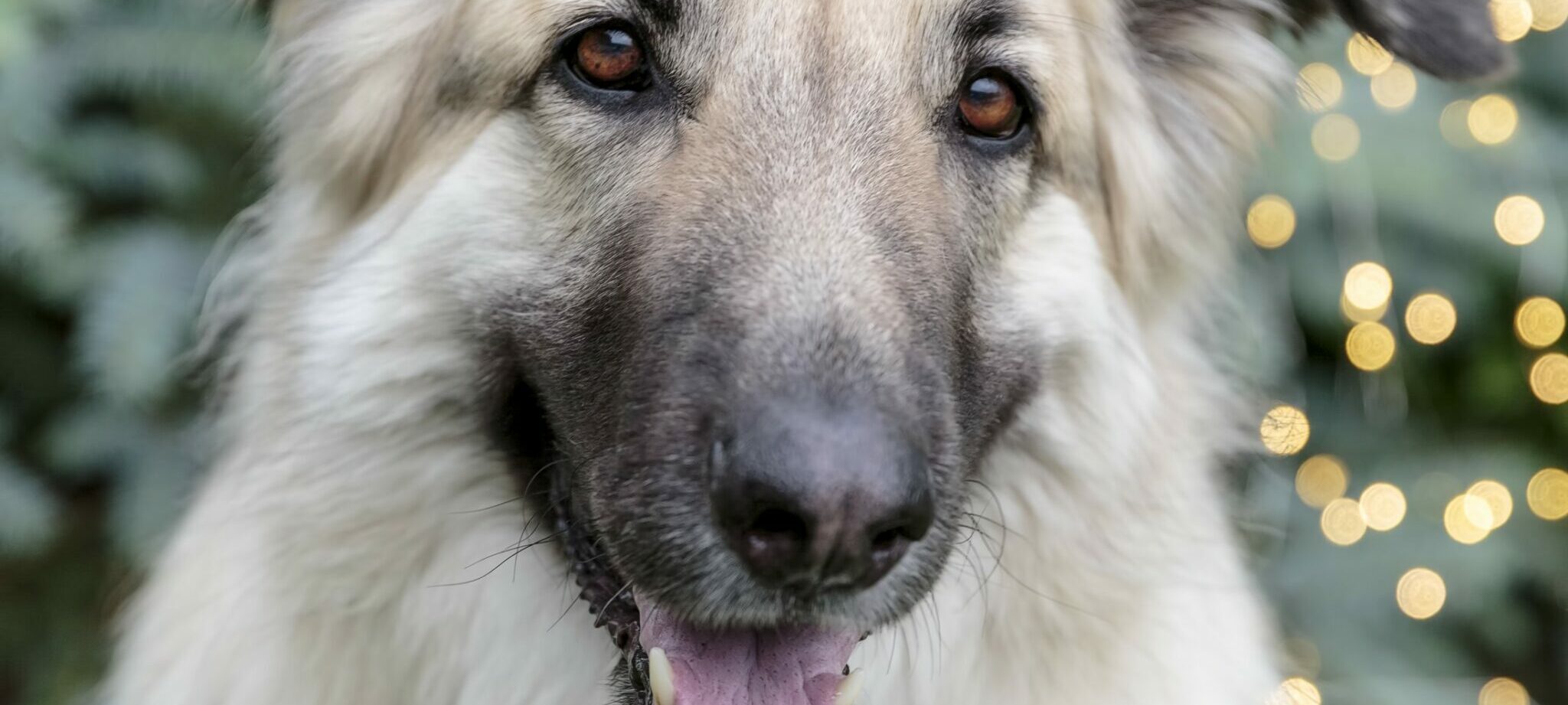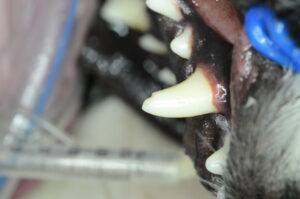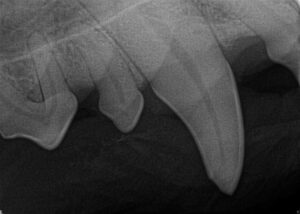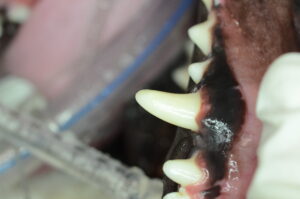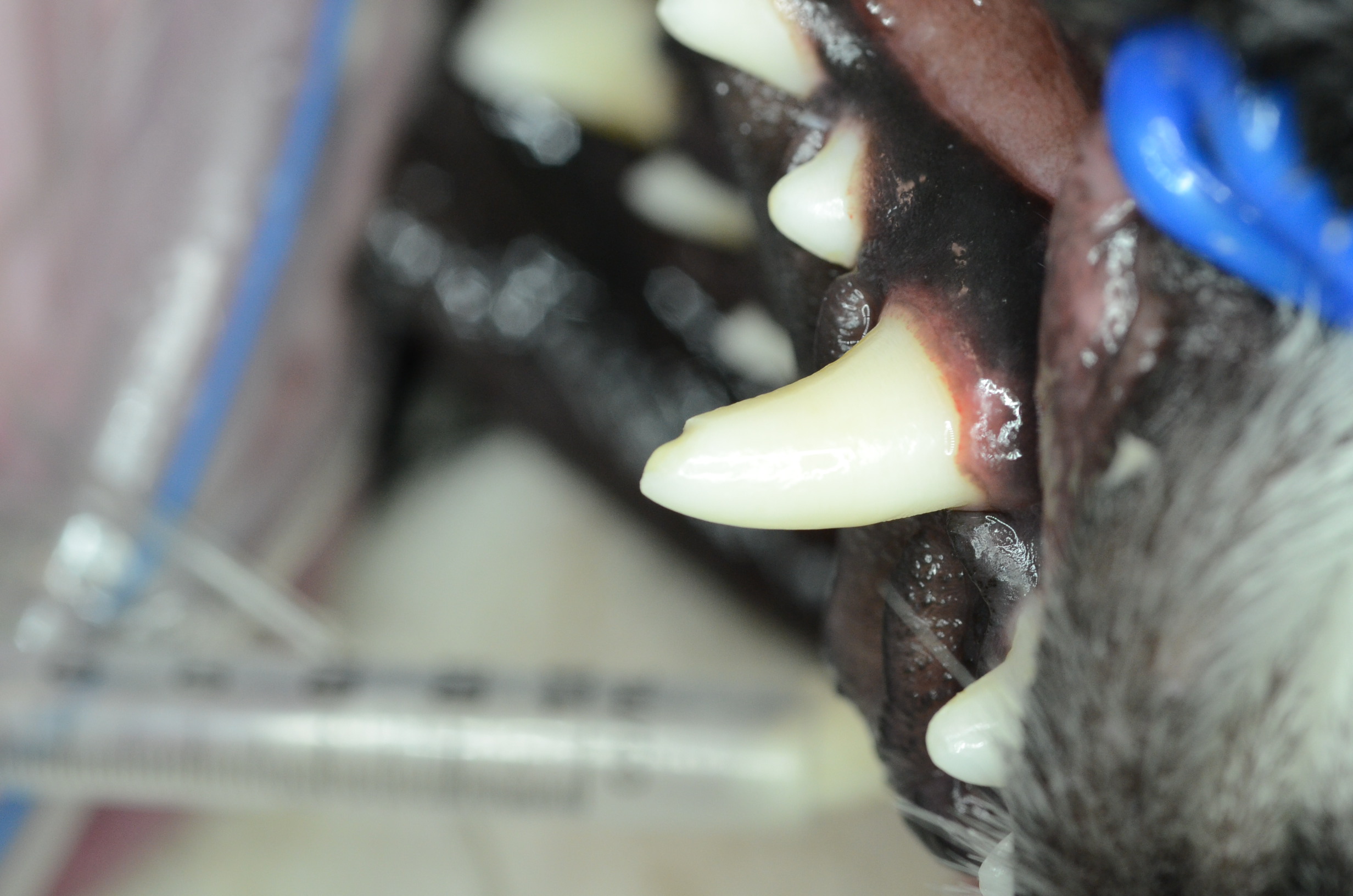
04 Mar All Types of Dog and Cat Broken Teeth Need Attention
A tooth fracture, regardless of being minor (dentin only) or severe (into the pulp cavity), can be discomforting to your pet. It is obvious that a broken tooth that enters the pulp cavity can be extremely painful. However, even when the dentin is only exposed, this can be uncomfortable for your dog or cat. Let’s take a look at how broken teeth can affect your dog or cat, and what to do about it.
What Does a Broken Dog or Cat Tooth Look Like?
The image below is from a pet that broke the tip of his left maxillary canine tooth. Dentin is exposed. Broken or fractured teeth can become sensitive and cause the pet to possibly alter his chewing/playing habits. A very wise local veterinarian noticed this on an annual wellness exam and referred this pet for treatment.
Assessing Fractured Pet Teeth
It is imperative that your vet perform dental x-rays to assess tooth vitality. If the dental x-rays are normal, then we can treat the tooth with a tooth-colored dental composite material. You’ll need to alter his chewing or playing habits (no more tug-of-war or hard chews). Rechecks annually are important.
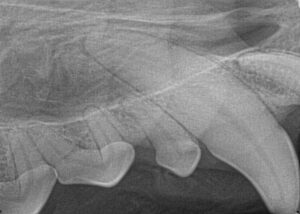
X-ray of the entire tooth root canal system to make sure the tooth is not diseased secondary to the fracture
Treating Broken Dog & Cat Teeth
Dental restoratives help protect the vital dentin from sensitivity and potential ingress of bacteria into the pulp cavity. If your dog or cat has a broken tooth, don’t ignore it. It can be uncomfortable and can also lead to further problems (tooth death).
Dr. Greenfield, DVM, DAVDC (Your Pet Dentist – Nashville)


